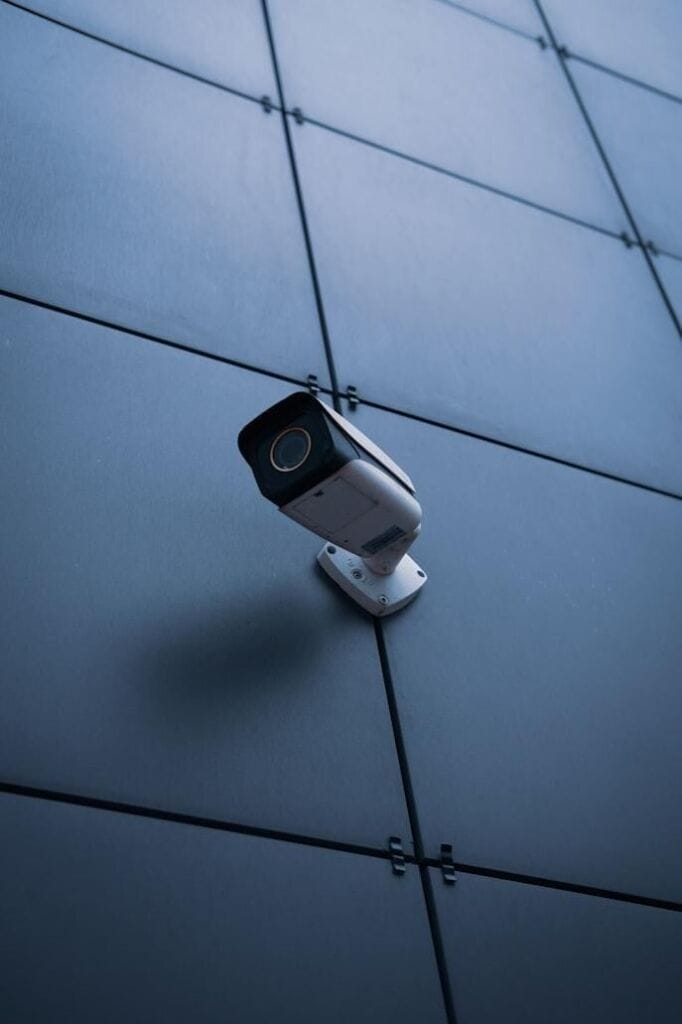Public safety has always been a priority for communities, but recent technological advancements have elevated how cities approach security. From AI-powered surveillance to smarter infrastructure, modern tools are helping authorities prevent incidents, respond more effectively, and create safer environments for citizens. As urban areas grow and populations become more concentrated, these innovations are playing a crucial role in maintaining security and improving the quality of life.
Technology is reshaping how streets are monitored, managed, and protected. The integration of data-driven systems, real-time communication, and advanced analytics is making communities safer without compromising efficiency. By understanding the different ways these tools are used, cities can create more secure streets for everyone.

Smart Surveillance and Real-Time Monitoring
Traditional security cameras have long been a staple of public safety strategies, but their capabilities were often limited to passive recording. Today’s smart surveillance systems use artificial intelligence, facial recognition, and motion detection to actively analyze activity and detect anomalies in real time. This means authorities can receive immediate alerts about suspicious behavior, enabling faster intervention before situations escalate.
The effectiveness of these systems lies in their ability to combine video feeds with other data sources. Smart surveillance networks can integrate with police databases, license plate readers, or public transportation systems to identify patterns and locate suspects quickly.
These technologies provide a comprehensive view of urban spaces, helping law enforcement stay proactive rather than reactive. For communities looking to modernize their security infrastructure, understanding how technology can enhance public safety is crucial. By deploying connected systems and AI-driven tools, cities can create safer streets while using resources more efficiently.
LOCAL NEWS: 10 things you may not know are manufactured in Arizona
INDUSTRY INSIGHTS: Want more news like this? Get our free newsletter here
Improved Street Lighting Through Smart Infrastructure
Proper lighting is one of the simplest yet most effective ways to enhance public safety. Well-lit streets deter criminal activity, make pedestrians feel safer, and improve visibility for drivers and cyclists. Advances in lighting technology have taken this concept further with the development of smart streetlights.
Smart lighting systems use sensors to adjust brightness based on activity levels and environmental conditions. Lights can automatically brighten when motion is detected, illuminating areas where people are walking or vehicles are passing through. This targeted illumination improves visibility while conserving energy during low-traffic periods.
Some cities are experimenting with lights that connect to emergency services. When unusual activity is detected, the lighting in an area can flash or increase in intensity, signaling authorities and drawing attention to the location. These innovations reduce crime and make streets feel safer for everyday use.
Integrating Emergency Response Systems with Technology
Emergency response times are critical during public safety incidents. Integrating technology with emergency services can significantly reduce delays and improve coordination. Advanced dispatch systems use real-time data from multiple sources, including surveillance cameras, sensors, and 911 calls, to provide first responders with accurate information before they arrive at a scene.
Mobile applications and wearable devices used by emergency personnel allow for direct communication and location sharing, ensuring responders know exactly where to go. Drones are being deployed to assess situations quickly, providing live video feeds that inform tactical decisions. These tools improve situational awareness and enable faster, more effective responses.
Cities that embrace these integrated systems are better equipped to handle emergencies, minimizing harm and restoring safety more efficiently.
Data Analytics for Predictive Policing
Data analytics is changing how law enforcement agencies approach crime prevention. Instead of reacting after incidents occur, predictive policing uses data to identify patterns, hotspots, and trends that indicate where crimes are likely to happen. This allows authorities to allocate resources strategically, increasing patrols in high-risk areas and preventing incidents before they occur.
Predictive models draw on a range of data sources, including historical crime records, weather patterns, event schedules, and traffic flows. By analyzing these variables, cities can anticipate potential issues and take targeted action. While predictive policing requires careful oversight to ensure fairness and transparency, its ability to improve efficiency and reduce crime rates has made it an increasingly valuable tool for urban security.
Advancements in Transportation Security
Transportation systems are central to urban life, and securing them is a key part of ensuring public safety. Technologies such as automated license plate readers, smart traffic signals, and vehicle-tracking systems help monitor movement and detect unusual activity. For example, license plate recognition can identify stolen vehicles in real time, alerting law enforcement and improving response times.
Public transit systems are benefiting from technological upgrades. Surveillance cameras in buses, trains, and stations provide real-time monitoring, while emergency communication devices give passengers direct access to help when needed. Some cities have introduced AI-powered crowd management tools to track passenger flow and detect potential hazards, improving both security and efficiency.
Building Community Engagement Through Digital Platforms
Technology enhances surveillance and response and strengthens community involvement in public safety. Mobile apps and online platforms allow citizens to report suspicious activities, share real-time updates, and receive alerts about incidents in their area. This two-way communication builds trust between communities and authorities, creating a collaborative approach to safety.
Social media platforms are increasingly used by police departments and city agencies to share information quickly and transparently. By keeping residents informed, these tools encourage vigilance and foster a shared sense of responsibility. Digital platforms give citizens a voice in security efforts, helping authorities identify issues earlier and respond more effectively.
Privacy, Ethics, and the Future of Urban Security
As technology becomes more embedded in public safety strategies, concerns about privacy and ethics grow. Facial recognition, data collection, and predictive analytics must be implemented with transparency and oversight to protect civil liberties. Clear regulations, accountability measures, and community involvement are crucial to maintaining trust.
The future of urban security will rely on balancing technological innovation with ethical responsibility. Cities that prioritize both safety and privacy will set the standard for effective, equitable security solutions. When technology is used thoughtfully, it can strengthen communities without compromising individual rights.

Image Source: https://unsplash.com/photos/empire-state-bSM_jWP5gwc
Technological advancements are reshaping how cities keep their streets secure. From AI-powered surveillance and smart infrastructure to predictive analytics and community engagement tools, these innovations provide more proactive and efficient approaches to public safety. By integrating systems, improving communication, and maintaining ethical oversight, cities can create safer, more connected environments for everyday citizens. Embracing these technologies today will shape the future of secure, resilient communities.




